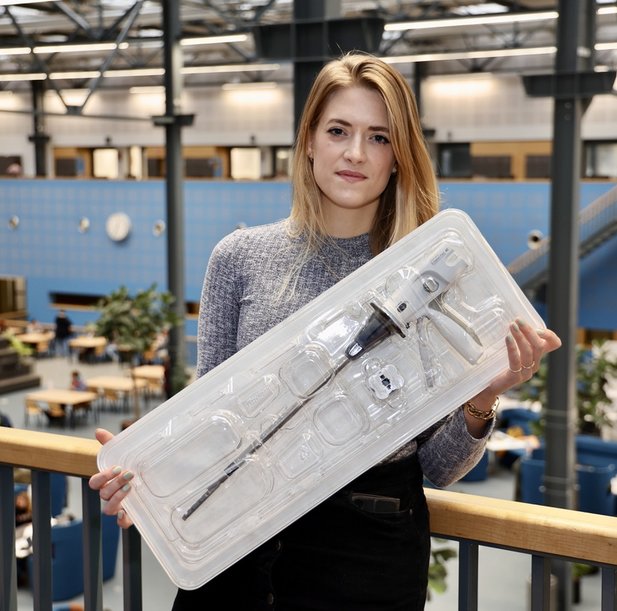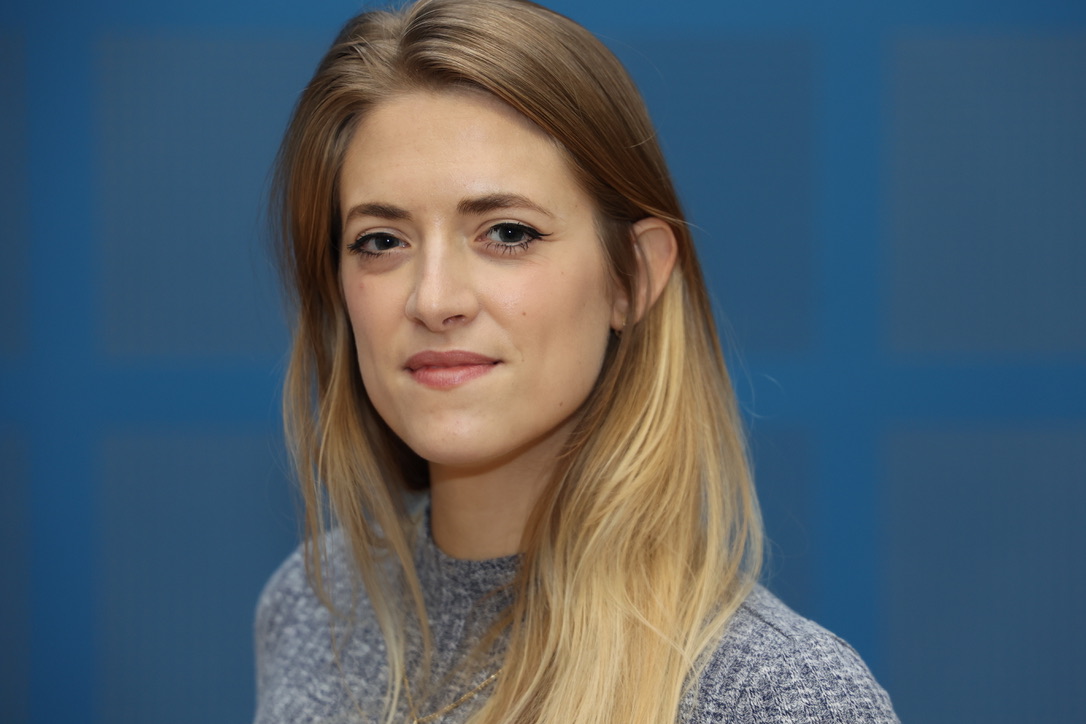Tamara Hoveling
What exactly do you do at the cutting edge of technology and healthcare?
During my bachelor’s degree studies I designed a user-friendly solution for ultrasound-guided venous access. It was fantastic to connect with medical professionals and work on a topic that actually has an impact on a patient’s treatment. In subsequent design projects, I noticed, for example, that the reuse of medical devices was hindered due to fear of infection risk. This results in many devices being discarded after one use, which is a shame and bad for the environment. I think it can be done differently!
In my research I focus on the circular design of medical devices containing electronics. One example of this is an endocutter used by a surgeon during keyhole surgery on the gastrointestinal tract. I am researching how these types of devices can be designed more sustainably without increasing the risk of infection. For example, do we really need electronics and can we reuse, refurbish or recycle the devices? To do this they must consist of as few parts as possible and these parts must be easy to remove, offer little space for bacteria to settle and preferably consist of a single type of material.
On the basis of various case studies, I want to arrive at more broadly applicable findings that I will publish in a circular design guide for medical devices. This can help technology continue to play an important role in improving healthcare without having a huge environmental impact.
My health ambassador Jan Carel Diehl is very much involved in circularity in healthcare, and health equity, such as access to healthcare in Africa. This shares common ground with my research because they often use instruments that we have discarded. If my research is successful, it will certainly also benefit them.

How do you experience the medical world?
Designing products for hospital use is very complex, but that’s what makes it enjoyable. I try to speak to as many people as possible and pay attention to everything going on: during an operation, in the sterilisation department, and in the purchasing department. I have been warmly welcomed but, then again, I also work with the people who are interested in circularity. This has not yet penetrated to all parts of the medical world.
One big thing I’ve come across is that the terminology we use doesn’t match. For example, if someone in the hospital is talking about recycling, they may be referring to reuse.
Do you have a top tip for engineers who already work or want to work in the medical domain?
Consider the possible side effects of your technological solutions and make sure you don’t get technology tunnel vision. Healthcare is an extremely complex system with a lot of stakeholders and your innovation must fit within that system.
Also try to speak to as many people from the hospital as possible. Walk along with them and get as close to the end use as possible.
